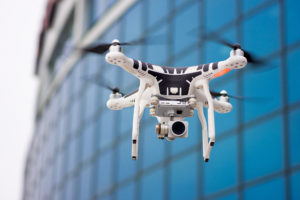Even the pros sometimes experience a drone crash. That doesn’t have to mean, however, that you’ve wasted a day’s – or a week’s – work. Whether you are an enthusiastic amateur or a seasoned professional filmmaker, following some basic guidelines can limit your risk: and a few emergency methods can help you get your data back in case of a dramatic landing.
David Zimmerman, CEO of the data recovery company LC Technology, has helped some of Hollywood’s most well-known producers recover their footage after losing it to a drone crash on set. We got Zimmerman’s top tips for protecting – and recovering – drone footage.
- Avoid water landings. Unless the drone is certified waterproof or an underwater model, avoid water at all costs. “Saltwater is especially damaging to storage cards and drives. If your card does get wet, immediately rinse it in fresh water and dry it as the salt will immediately start to oxidize and deteriorate the contacts on the card and might make data recovery impossible,” Zimmerman says.
- Use the same SD card for each drone, instead of swapping them back and forth. Each drone’s camera will format an SD card in a particular way and moving the card between another drone will cause and data currently on that card to no longer be accessible once the new device initializes the card.
- Avoid running the battery too low. Some data loss incidents occur due to low or no battery, so pay attention to the drone’s battery level and avoid running it too low while in Record Mode as this can cause errors and result in data not being properly written to the memory card which can cause file corruption.
- Make sure to handle SD cards with care when they are out of the drone. These cards are light, but are extremely small and fragile, sometimes holding an extraordinary amount of data. Avoid exposing the cards to extreme temperature, static electricity and humidity, and keep them away from sand or dirt as well. “This tip is easy to implement but makes a drastic difference,” Zimmerman says. “When shooting out in the field, be sure to use labelled cases for all SD cards to ensure cards are organized so you don’t accidentally overwrite data on existing recorded cards.”
- In the case of a severe drone crash, with a broken camera and possibly damaged SD card, avoid DIY recovery methods that could damage the footage even further. Qualified data recovery services have tools for extracting data from damaged devices. “You can utilize rescue programs from a variety of reputable companies such as SanDisk,” Zimmerman says. “But only if the SD card isn’t physically damaged and is accessible.”
- If you have a backup system and use the cloud, make sure to move the data from the drone to the cloud as soon as possible. This is good practice and should be part of every drone user’s routine. Don’t let data sit on an SD card or the drone’s own internal storage for any length of period of time. Remove it as quickly as possible and then create your backup to the cloud. “Drones are flying cameras,” Zimmerman says. “They aren’t intended as permanent data storage devices, so move your content to the cloud and hard drives to prevent unrecoverable loss.”
David Zimmerman is the CEO of LC Technology, the creators of SanDisk RescuePRO® and RescuePRO® Deluxe Memory Card Recovery Software for Windowsfile and data recovery software products. They recover a variety of file types including photos, video, documents, music and hundreds of other popular file types.
Did you just discover that the movies or pictures you shot on your digital camera (even GoPro® and drone cameras!) have “disappeared”? SanDisk RescuePRO® SD Memory Card Recovery Software to the rescue!
Miriam McNabb is the Editor-in-Chief of DRONELIFE and CEO of JobForDrones, a professional drone services marketplace, and a fascinated observer of the emerging drone industry and the regulatory environment for drones. Miriam has penned over 3,000 articles focused on the commercial drone space and is an international speaker and recognized figure in the industry. Miriam has a degree from the University of Chicago and over 20 years of experience in high tech sales and marketing for new technologies.
For drone industry consulting or writing, Email Miriam.
TWITTER:@spaldingbarker
Subscribe to DroneLife here.
